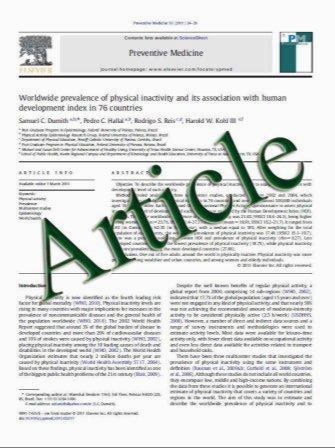MIB1/Ki-67 labelling index can classify grade 2 breast cancer into two clinically distinct subgroups
- نوع فایل : کتاب
- زبان : انگلیسی
- مؤلف : Mohammed A. Aleskandarany , Emad A. Rakha, R. Douglas Macmillan , Desmond G. Powe , Ian O. Ellis , Andrew R. Green
- چاپ و سال / کشور: 2010
Description
Histological grade is recognized as one of the strongest prognostic factors in operable breast cancer (BC). Although grade 1 and grade 3 tumours are biologically and clinically distinct, grade 2 tumours bear considerable difficulty in outcome prediction and planning therapies. Several attempts such as genomic grade index have been performed to subclassify grade 2 into two subgroups with clinical relevance. Here, we present evidence that the routinely evaluable immunohistochemical MIB1/Ki67 labelling index (MIB-LI) can classify grade 2 tumours into two clinically distinct subgroups. In this study, growth fractions of 1,550 primary operable invasive breast carcinomas were immunohistochemically assayed on full-face tissue sections using the MIB1 clone of Ki-67. Growth fractions were assessed as number of MIB1 positive nuclei in 1,000 tumour nuclei at high-power magnification and expressed as MIB1-LI. Using a 10% cut-point of MIB1-LI, grade 2 BCs were classified into low (49.8%) and high (50.2%) proliferative subgroups. Univariate and multivariate survival analysis revealed statistically significant differences between these subgroups regarding patients’ BC specific survival (P\0.001), and metastasis free survival (P\0.001) which was independent of the well-established prognostic factors (HR = 2.944, 95% CI = 1.634–5.303, P\0.001). In conclusion, our results further demonstrate that grade 2 BCs may represent at least two biological or behaviourally different entities. Assay of growth fraction in BC using MIB1/Ki67 immunohistochemistry is a robust cost-effective diagnostic tool that subdivides grade 2 tumours into low and high risk populations providing additional prognostic information in planning therapies and outcome prediction.
Breast Cancer Res Treat (2011) 127:591–599 Received: 13 January 2010 / Accepted: 30 June 2010 / Published online: 11 July 2010 , Springer Science+Business Media, LLC. 2010


